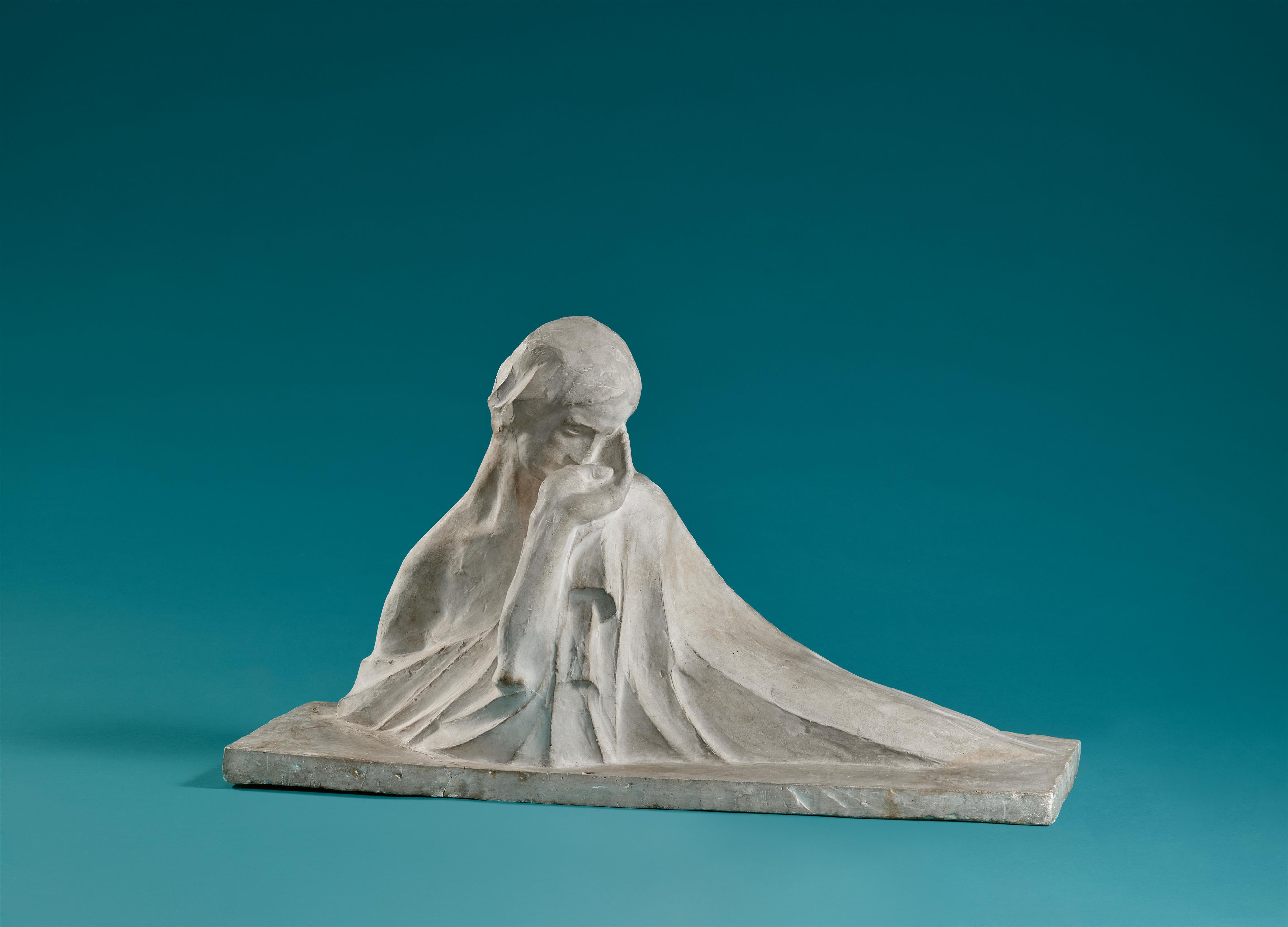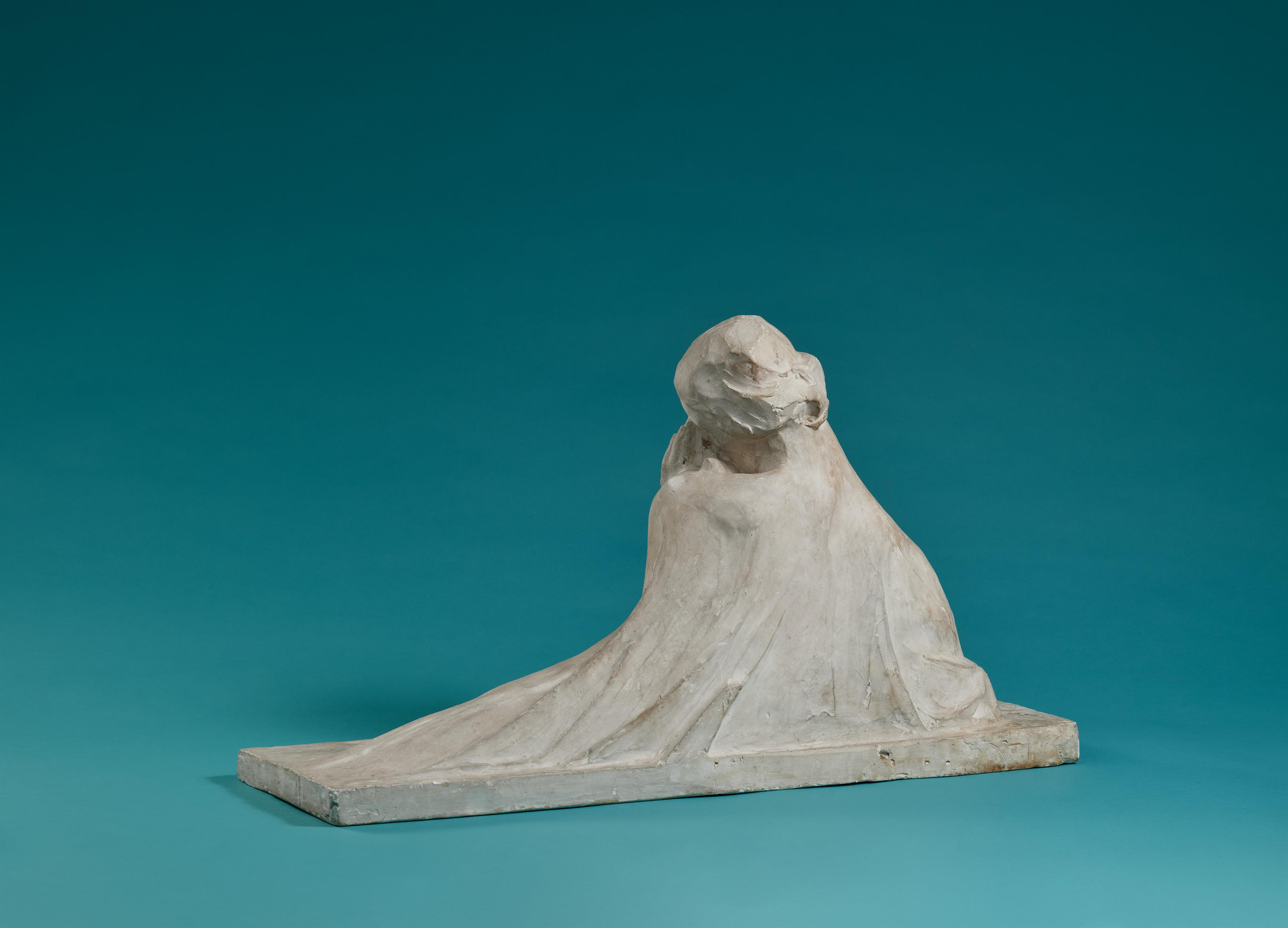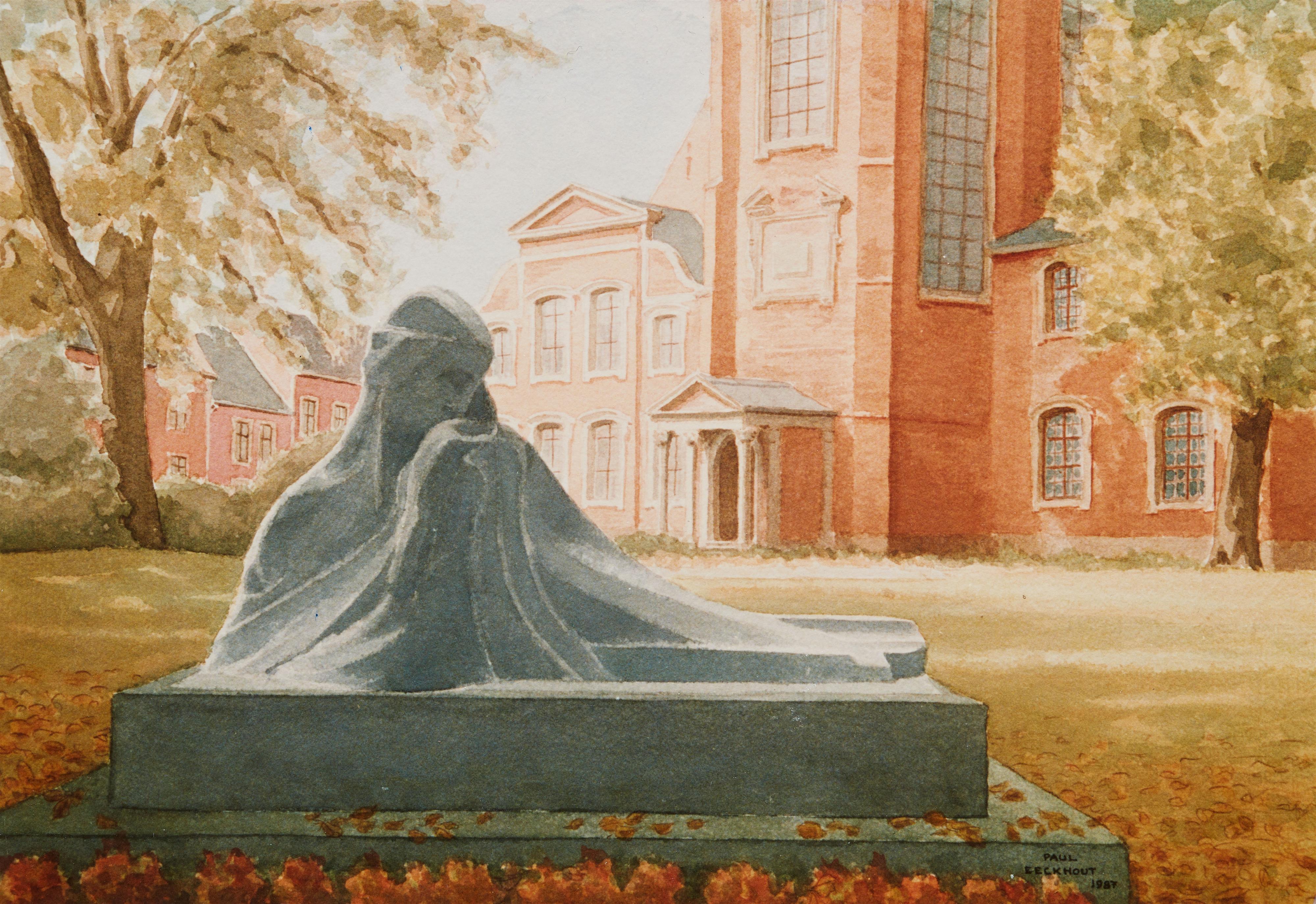George Minne
Modell für das Denkmal von Georges Rodenbach
1902
Plaster. 47 x 83 x 28.7 cm. Unsigned. - Tinted light grey with cast seams and studio traces. The front left corner of the plinth set several times.
Towards the end of the 19th century, the Belgian sculptor and draughtsman George Minne was – alongside Auguste Rodin and Aristide Maillol – the most important representative of staunchly modern sculpture. He achieved international fame with his portrait busts of members of the Belgian royal house and, particularly, with his “Jünglingsbrunnen” completed in 1906 for Karl Ernst Osthaus’s Folkwang Museum in Hagen.
In 1899/1900 Emil Verhaeren, Max Elskamp and the “Société des Artistes et Ecrivains français” commissioned him to create a monument for the Belgian poet and author Georges Rodenbach (1855-1898). After initially working as a lawyer, but practising solely to earn his living, Rodenbach later concentrated entirely on writing poems, novels and stories for the stage. His best-known work, “Bruges-la-Morte”, was published in 1892. Even though his book speaks of a dying city, it paradoxically helped give Bruges new life with economic recovery, a briskly active building trade and its first influx of tourists. Verhaeren and the other members of the committee which commissioned the monument therefore planned on its placement in a prominent location in Bruges. However, the city refused. After years of negotiations the city administrators of nearby Ghent were finally prepared to erect the monument, which had been realised in marble and was 140 cm tall, in the St Elisabethbegijnhof.
The piece offered here is the only preserved plaster model, which Minne was able to successfully present to the “Société des Artistes et Ecrivains français”. In keeping with his “expressive sculpture”, he commemorated the poet by designing an image of a woman wrapped in a long robe and leaning her head on her right hand, filled with sorrow.
According to a letter from Paul Eeckhout, Director of the Museum of Fine Arts Ghent, the model came directly from the sculptor Minne’s estate.
Catalogue Raisonné
Rossi-Schrimpf P 30A
Provenance
Thomas Braun, Brussels; Paul Eeckhout, Ghent; Galerie Brockstedt, Hamburg, 1984; private collection, Hesse
Literature
André de Ridder, George Minne, Antwerp 1947, no. 16 (marble version); Inga Rossi-Schrimpf, George Minne. Das Frühwerk und seine Rezeption in Deutschland und Österreich bis zum Ersten Weltkrieg, Weimar 2012, p. 199, ill. 99
Exhibitions
Cf. Ghent 1982 (Museum voor Schone Kunsten), George Minne en de kunst rond 1900, no. 104a (marble version)






